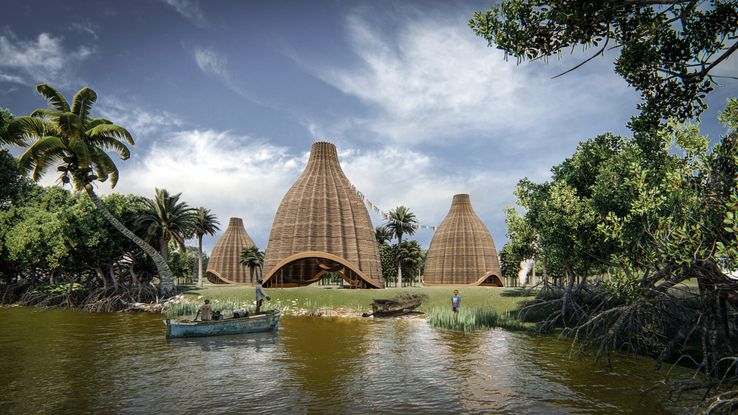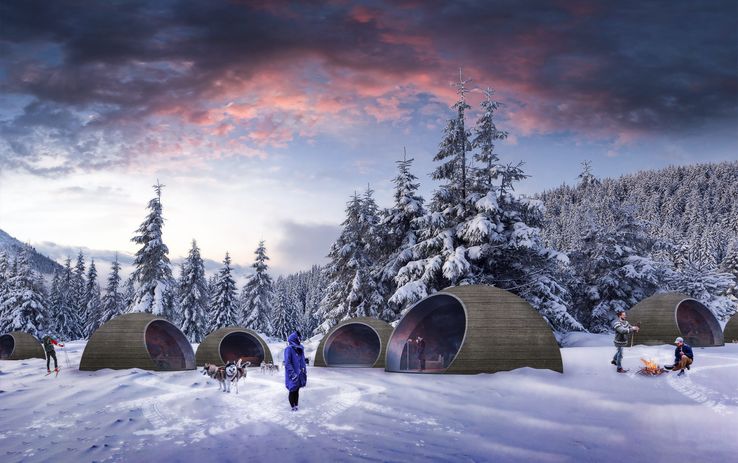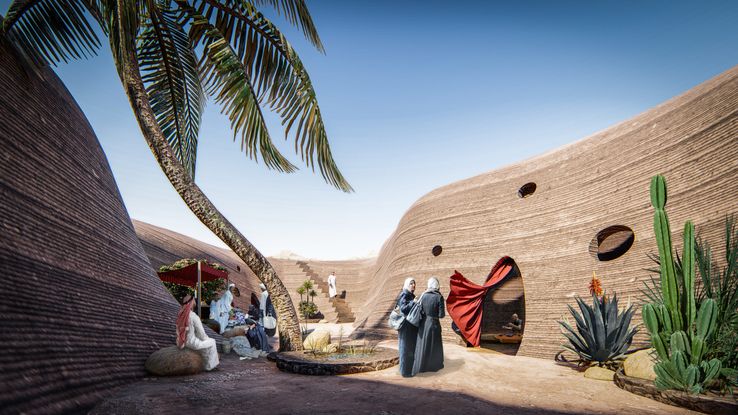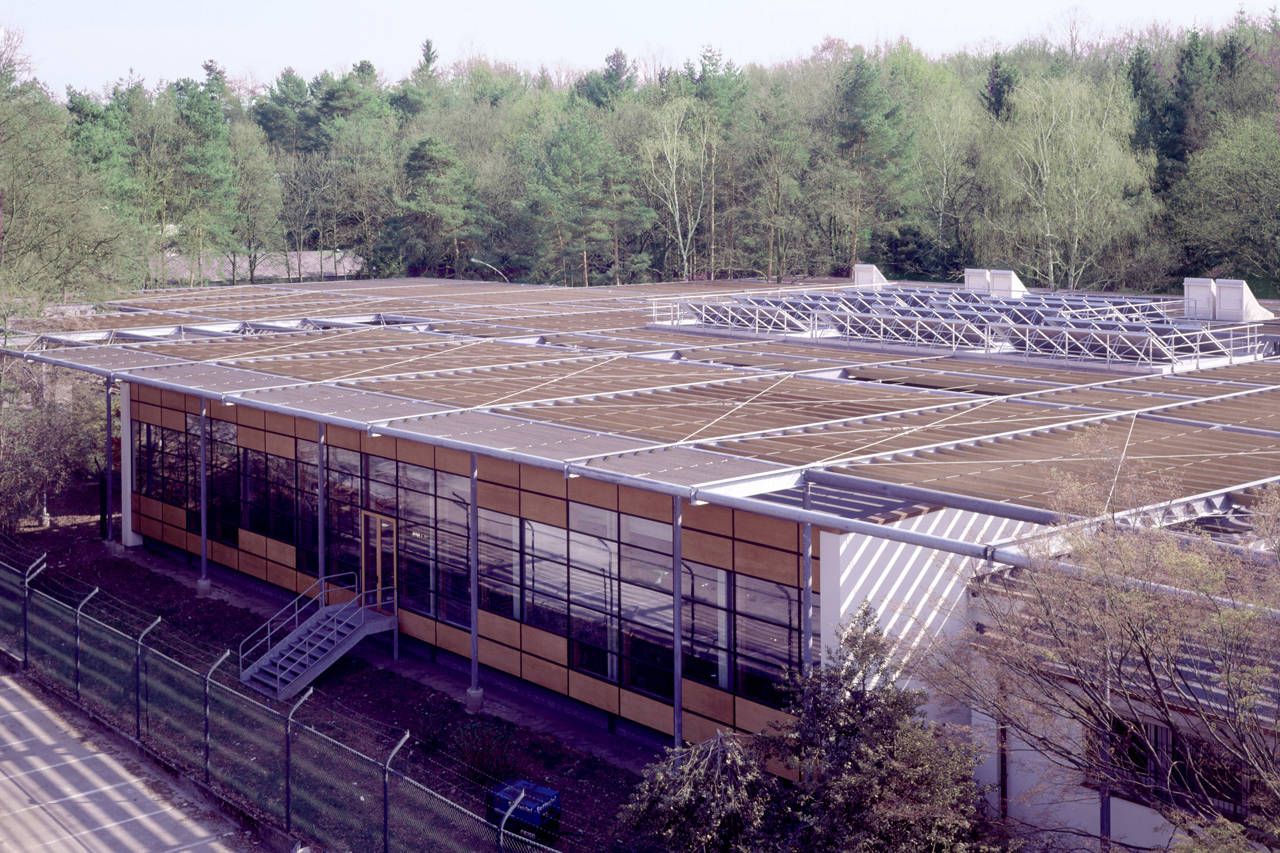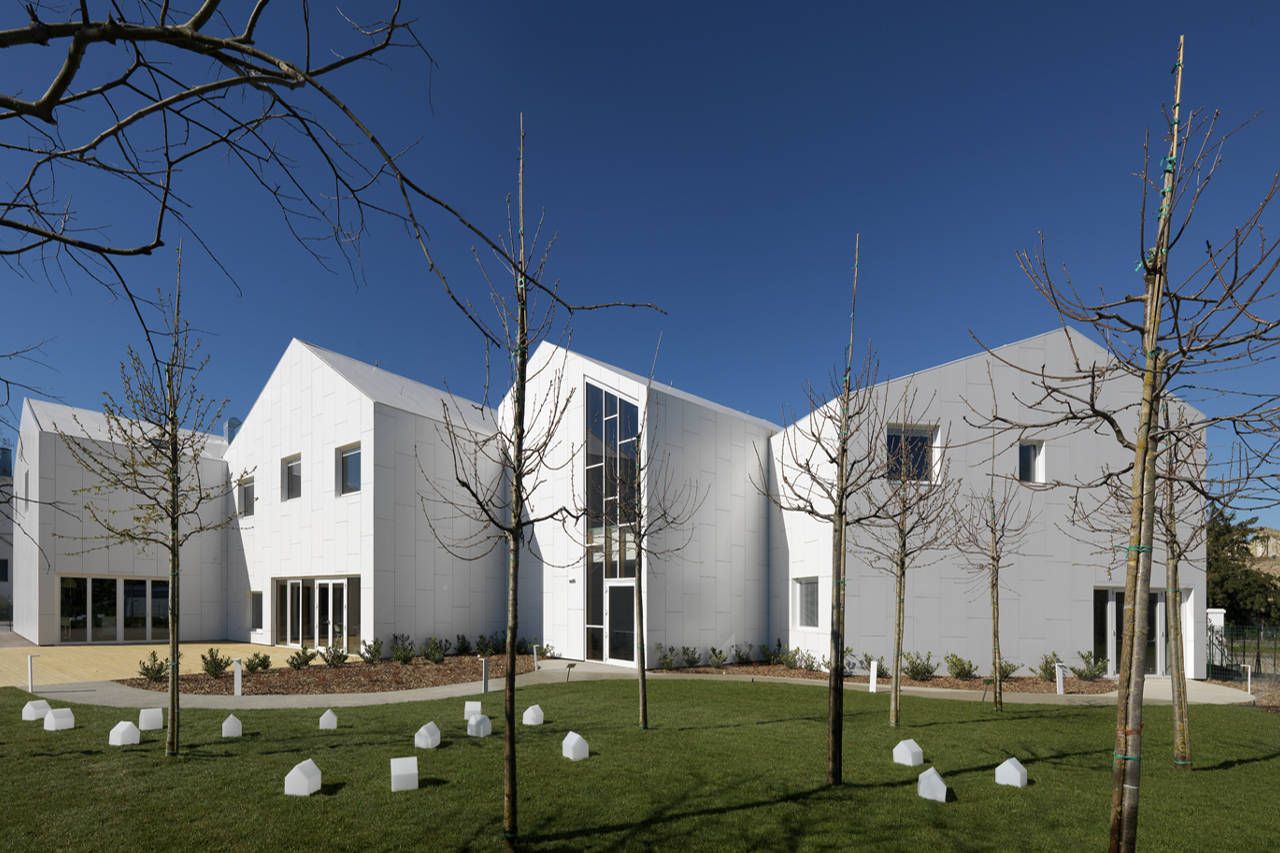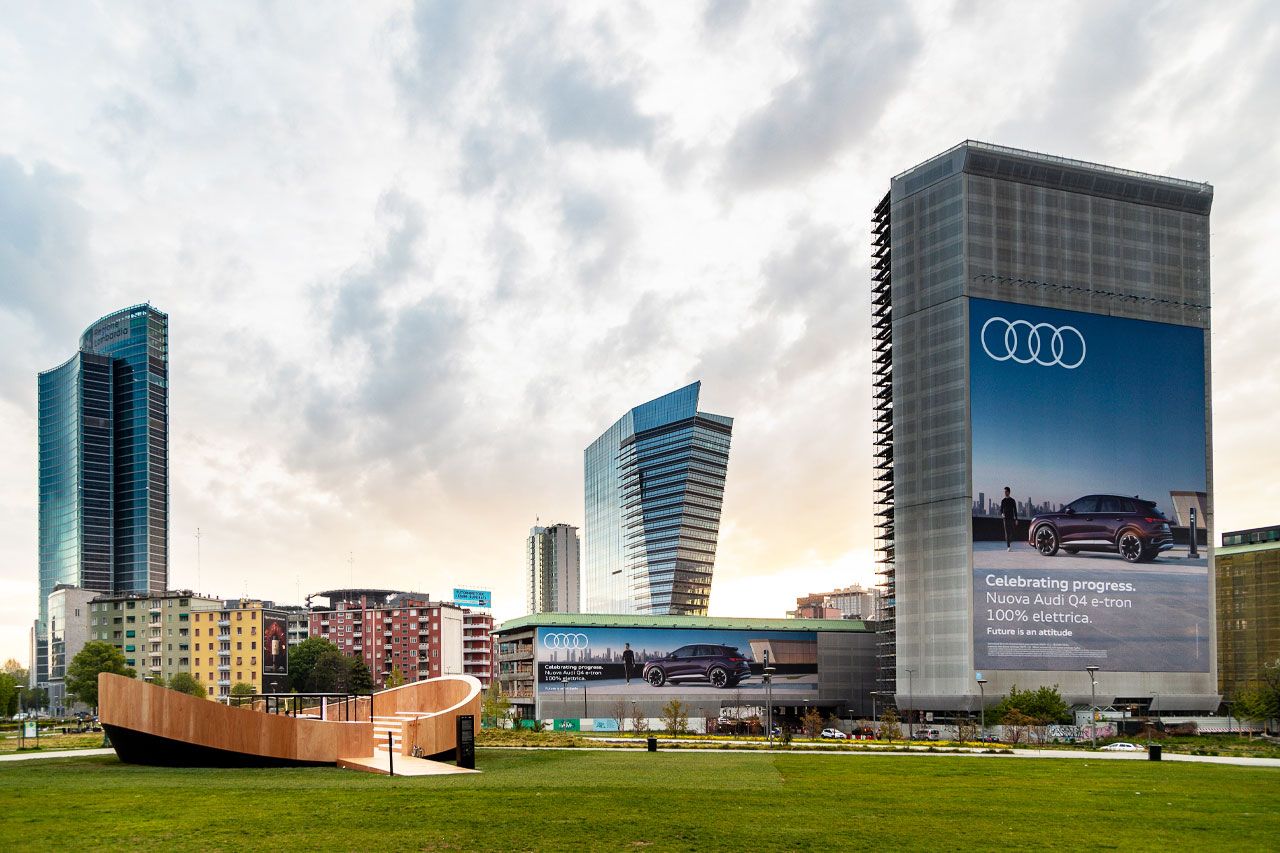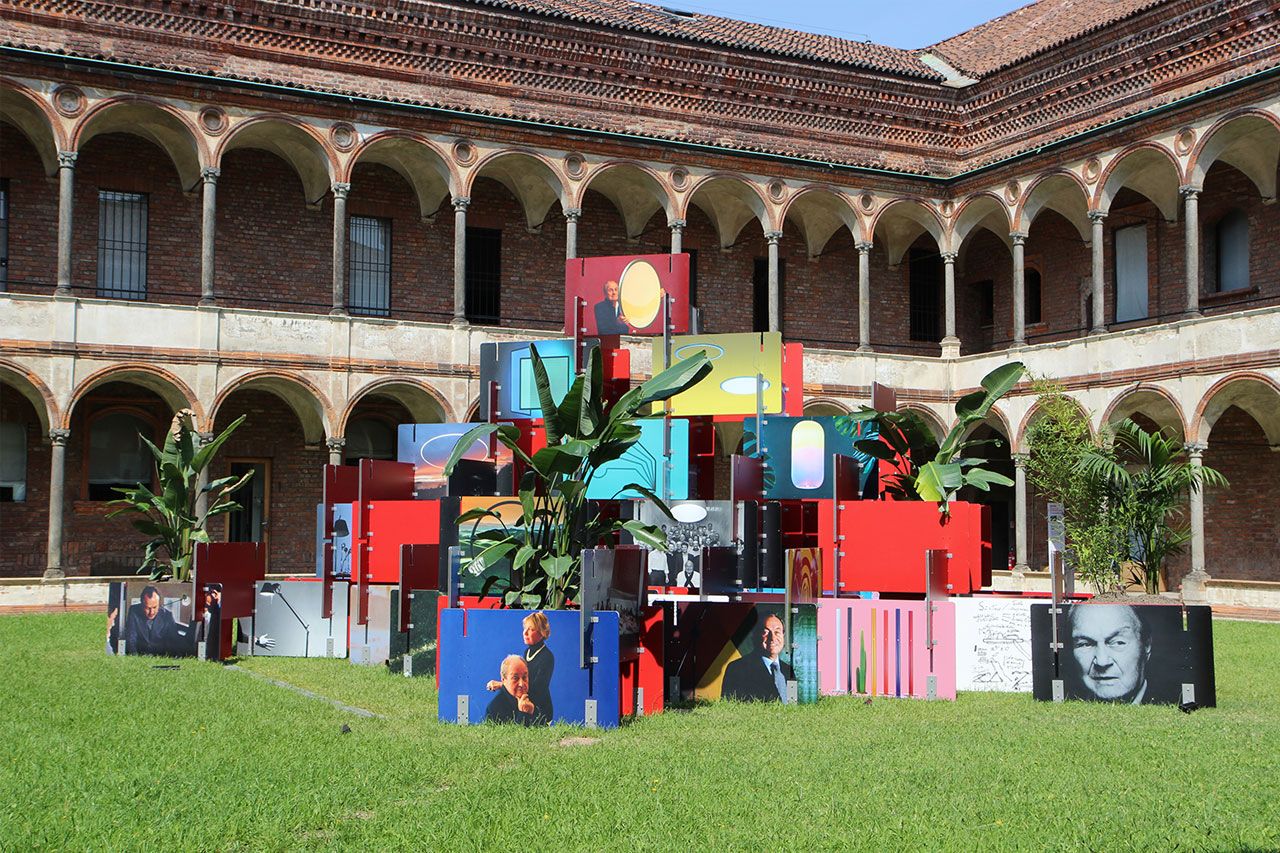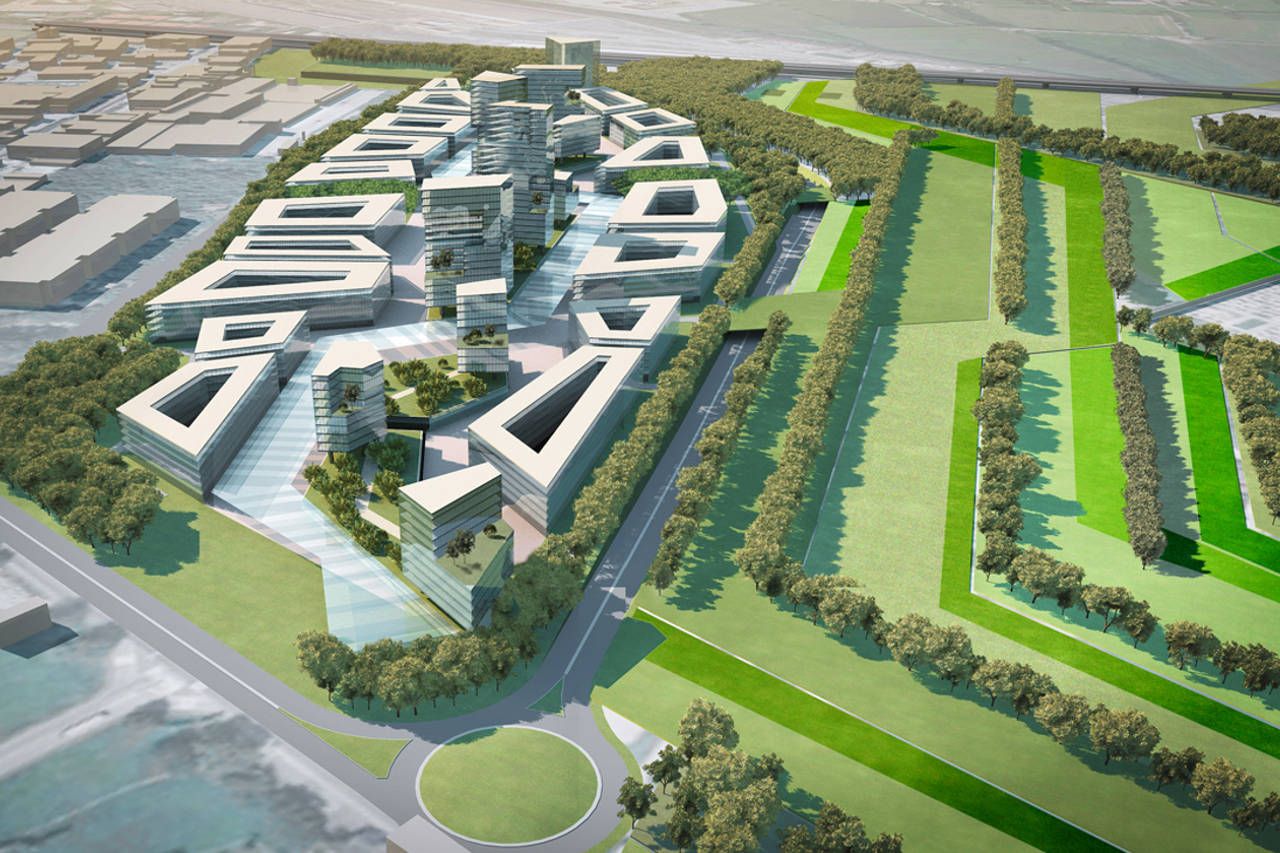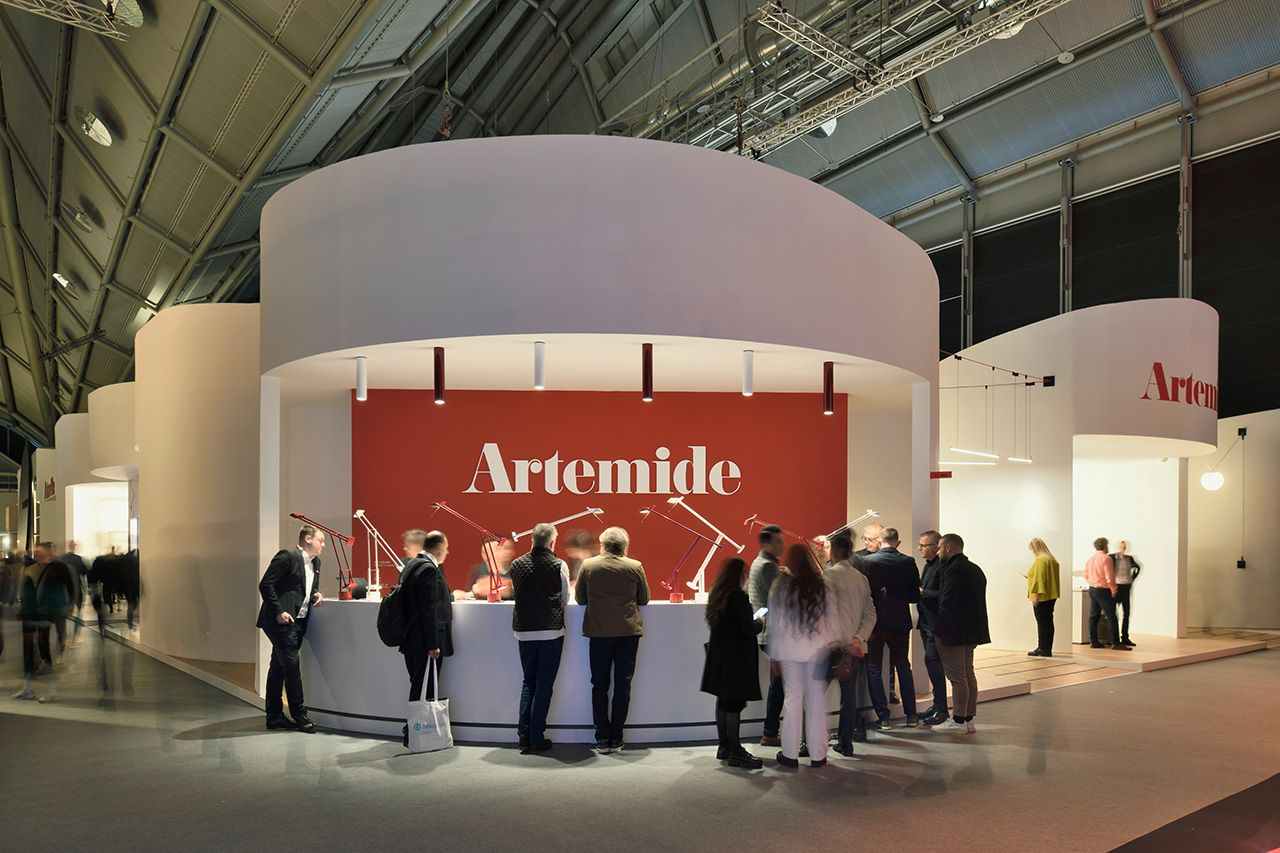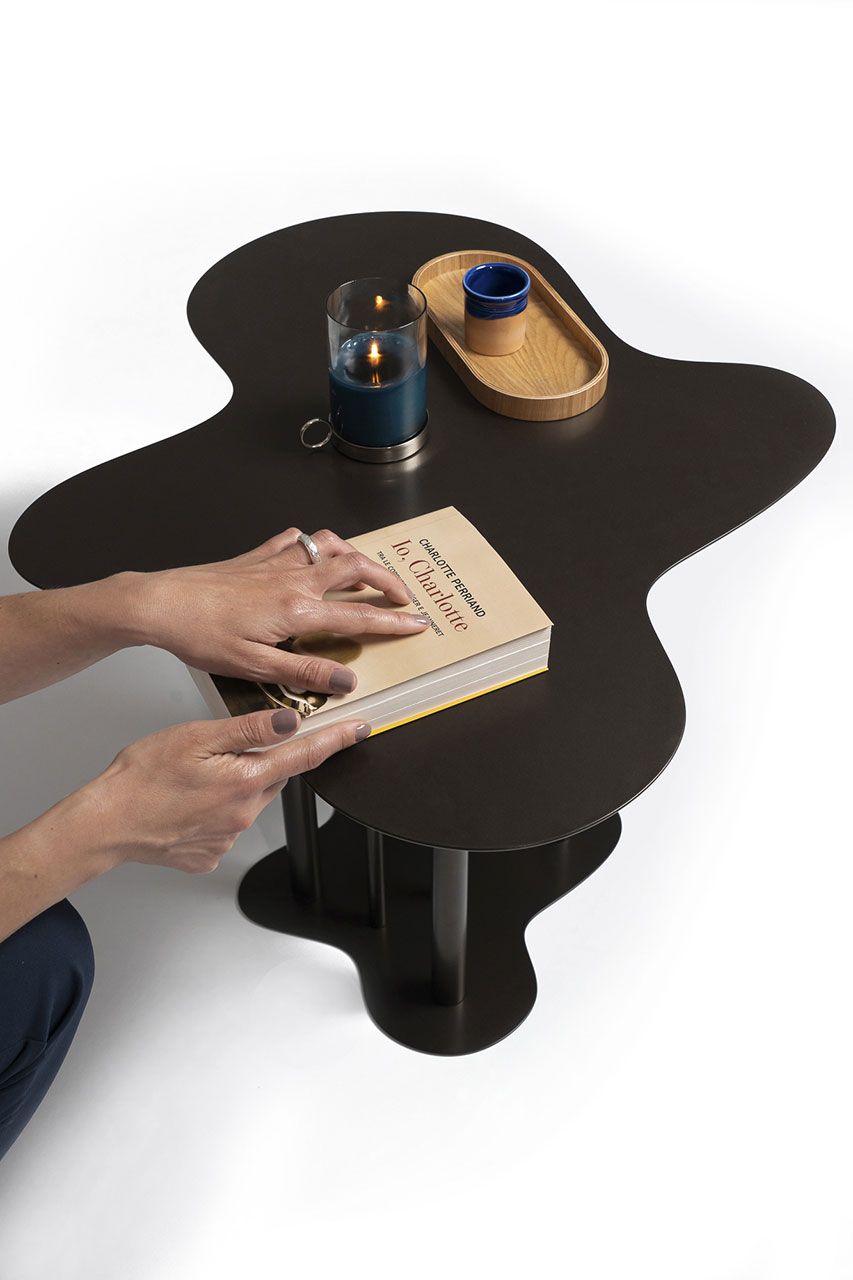Sviluppato in collaborazione con WASP (World’s Advanced Saving Project), MCA ha avviato lo studio del progetto TECLA nel 2019 basandosi sulle ricerche di ecosostenibilità di SOS – School of Sustainability – scuola fondata da Mario Cucinella. Questo progetto è il risultato del rapporto empatico tra tecnologia e architettura e costituisce il primo passo verso un cambiamento nella concezione di alloggi ecologici.
TECLA – Technology and Clay
Il primo prototipo di abitazione ecosostenibile stampato in 3D in terra cruda
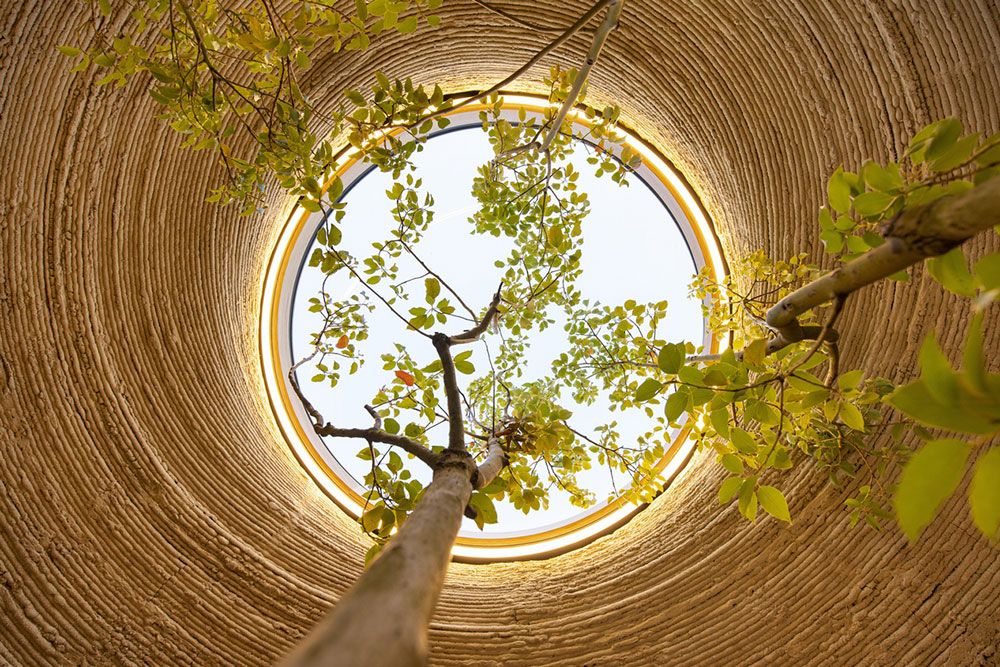
Una delle città invisibili di Italo Calvino
Un nuovo prototipo di casa ecosostenibile
Si tratta di un prototipo di casa stampato in 3D, in cui confluiscono le ricerche sulle pratiche costruttive vernacolari, lo studio del clima e dei principi bioclimatici, l’uso di materiali naturali e locali e l’applicazione delle più avanzate tecnologie della stampa tridimensionale. Sviluppato in collaborazione con WASP, TECLA nasce nel 2020 per soddisfare il bisogno della casa green a km 0, prendendo ispirazione dalla vespa vasaia come risposta al grande tema globale dell’emergenza abitativa cui si dovrà fare fronte, sia nelle aree periferiche delle grandi città metropolitane, sia nei contesti di crisi generati dalle grandi migrazioni e dalle catastrofi naturali. Un progetto ispirato dalla volontà di avvicinarsi alle esigenze delle persone e che trova nella terra una risposta per la Terra.
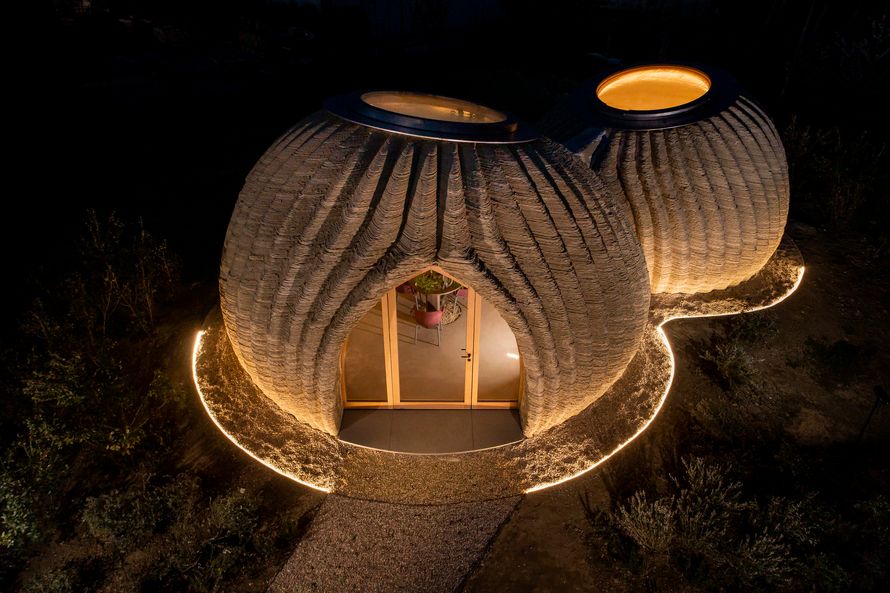
©Iago Corazza
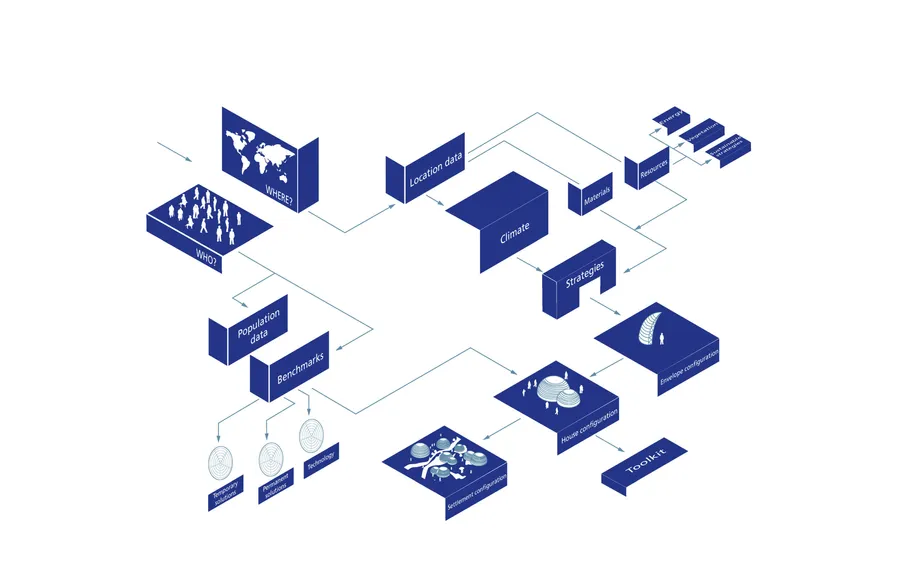
Mappa sistemica del processo di progettazione che, a partire da una serie di imput generali,
quali l’identificazione del luogo e delle sue caratteristiche climatiche, porta dalla definizione
delle strategie generali di progettazione fino alla forma, al materiale da costruzione e alle caratteristiche tecniche di dettaglio
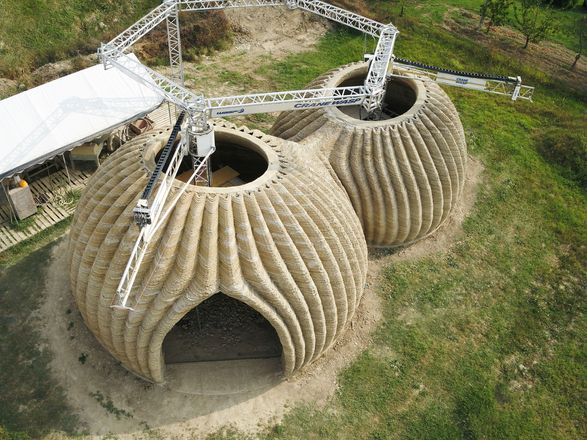
©WASP
Un progetto congiunto di MCA e WASP
01 di 03
/
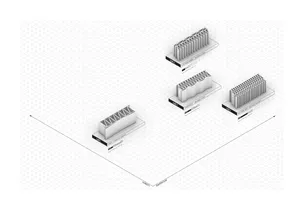
Grafico riassuntivo di ottimizzazione dell’infill sulla base della variazione di umidità e temperatura (distribuzione e variazione dell’infill dei tre casi studio esaminati) – Diagramma di SOS
Infill
Una delle principali innovazioni messe a disposizione dalla tecnologia di stampa 3D rispetto alle tecniche di costruzione tradizionali è certamente l’estrema flessibilità della forma. La parametrizzazione, infatti, permette di ottenere forme complesse e variabili fino ad ora impensabili. Questa libertà, tuttavia, non si limita a consentire la realizzazione di nuove forme ma può avere importanti ripercussioni anche sulle performance dell’edificio, in particolare su quelle dell’involucro edilizio. Involucro che è in grado, sulla base di alcuni parametri geometrici prestabiliti, di cambiare parametricamente in base al dato climatico, dando vita, di volta in volta, alla configurazione più performante rispetto al luogo per cui è pensato.
Tre sono i parametri presi in considerazione per l’ottimizzazione dell’infill di TECLA: la ventilazione e l’ombreggiamento (affidata allo strato più esterno), l’isolamento (ottenuto grazie al riempimento delle cavità intermedie con lolla di ...
Una delle principali innovazioni messe a disposizione dalla tecnologia di stampa 3D rispetto alle tecniche di costruzione tradizionali è certamente l’estrema flessibilità della forma. La parametrizzazione, infatti, permette di ottenere forme complesse e variabili fino ad ora impensabili. Questa libertà, tuttavia, non si limita a consentire la realizzazione di nuove forme ma può avere importanti ripercussioni anche sulle performance dell’edificio, in particolare su quelle dell’involucro edilizio. Involucro che è in grado, sulla base di alcuni parametri geometrici prestabiliti, di cambiare parametricamente in base al dato climatico, dando vita, di volta in volta, alla configurazione più performante rispetto al luogo per cui è pensato.
Tre sono i parametri presi in considerazione per l’ottimizzazione dell’infill di TECLA: la ventilazione e l’ombreggiamento (affidata allo strato più esterno), l’isolamento (ottenuto grazie al riempimento delle cavità intermedie con lolla di riso, prodotto di scarto della lavorazione del cereale) e la massa termica (che aumenta all’aumentare delle “nervature” di terra dell’infill).
Ogni tipo di clima troverà in queste infinite combinazioni una configurazione ottimale, determinata dalla massimizzazione/minimizzazione di alcune caratteristiche rispetto alle altre. Così a un clima molto umido, per cui la massa termica – capace di immagazzinare umidità indesiderata – risulta un aspetto critico, corrisponderanno sinusoidi molto dilatate e uno strato ventilante molto ampio. Allo stesso modo in un clima rigido l’isolamento diventerà preponderante rispetto agli altri strati, limitando gli apporti della ventilazione che mettono in contatto l’involucro con l’aria fredda esterna. Il risultato, che è riassunto nell’immagine della matrice di ottimizzazione, è un infill capace di adattarsi al contesto ambientale e garantire i massimi livelli di comfort interno pur partendo da materiali locali e da una grande semplicità di concezione.
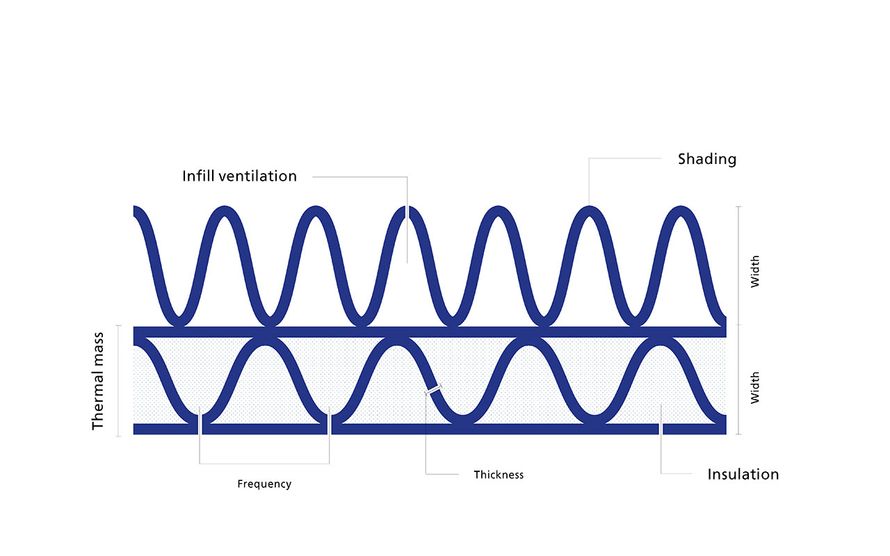
Elementi costitutivi che caratterizzano l’infill definendo il contributo di ogni componente
nella performance generale dell’involucro. L’infill è composto da due strati caratterizzati
da un andamento sinusoidale indipendente, che varia a seconda di parametri di valutazione
come isolamento, massa termica, ventilazione interstiziale e ombreggiamento. – Diagramma di SOS
Ci piace pensare che TECLA sia stata l’inizio di una nuova storia; sarebbe veramente straordinario dar forma al futatturo raverso la trasformazione di questa materia antica con le tecnologie che abbiamo a disposizione oggi. L’estetica di questa casa è il risultato di uno sforzo tecnico e di materia, non è stato un approccio solo di natura estetica. E’ una forma onesta, una forma sincera
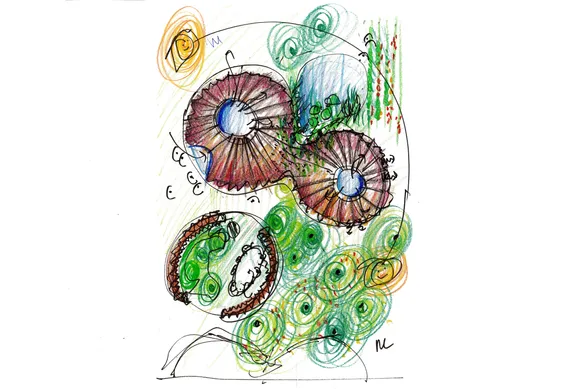
Archivio MCA
Un progetto a basse emissioni di carbonio
TECLA, esempio pionieristico di abitazione a basse emissioni di carbonio, è la dimostrazione di cosa si può realizzare se uniamo le nostre conoscenze attuali con quelle che ci arrivano dal passato; l’uomo ha saputo costruire e sviluppare ecosistemi resilienti, tenendo conto dei principi bioclimatici e utilizzando materiali naturali e locali che potranno essere ancora applicati in futuro. L’uso di materiali locali consente di accorciare la filiera; l’impiego della stampa 3D di contenere i rifiuti e gli scarti.
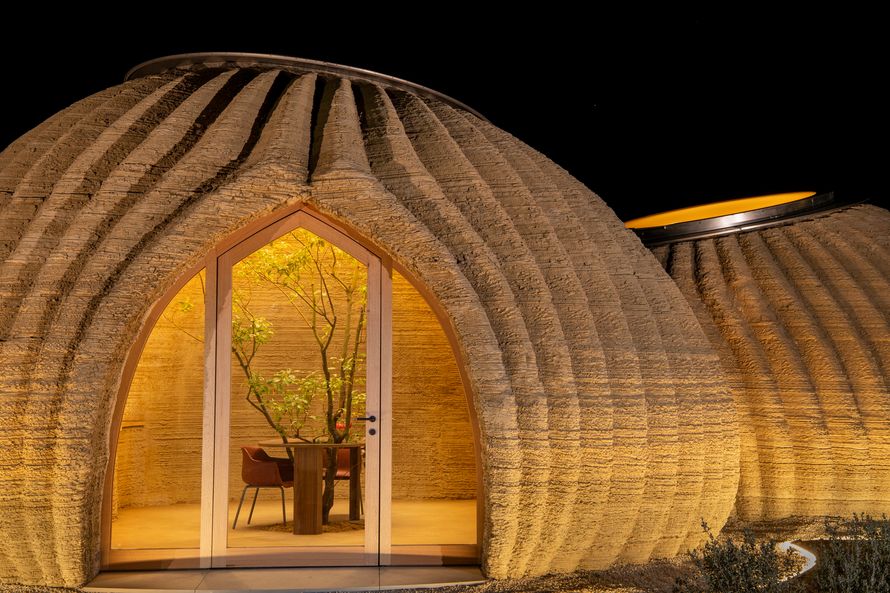
©Iago Corazza
Tecnologia di stampa 3D
La tecnologia studiata per la stampa 3D consente di realizzare una singola unità in 72 ore, con una considerevole diminuzione delle tempistiche rispetto alle tecnologie costruttive tradizionali e una significativa riduzione dei rifiuti e delle emissioni prodotte, grazie all’utilizzo della terra come materiale costruttivo e allo studio delle performance meccaniche e termiche dell’involucro. Grande attenzione è stata posta su quegli aspetti tecnologici che vanno dall’ottimizzazione della forma a quella del conglomerato fino allo studio dell’infill, la cui variabilità e adattabilità al contesto climatico sono state definite sulla base di parametri ambientali quali umidità, ventilazione, inerzia termica, ombreggiamento.
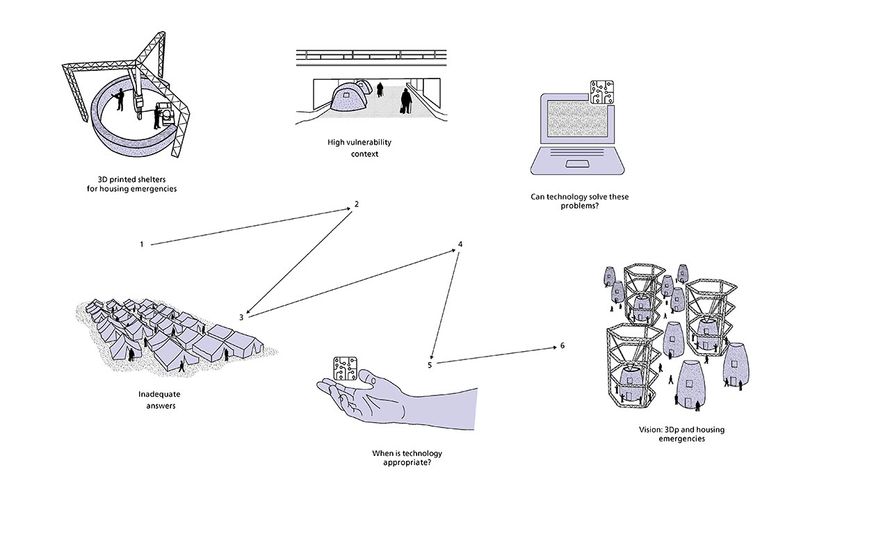
Schema concettuale della metodologia che ha portato dalla fase di ricerca analitica al progetto di ricerca applicata – Diagramma di SOS
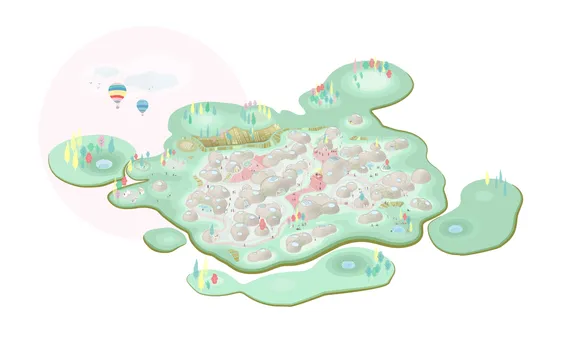
Assonometria di sviluppo del masterplan del caso studio. Il disegno del masterplan è stato
sviluppato tenendo conto del benessere delle persone, a partire dall’aggregazione dei diversi moduli, dalla sistemazione degli spazi esterni, così da garantire il comfort esterno e interno degli utenti – Diagramma di SOS
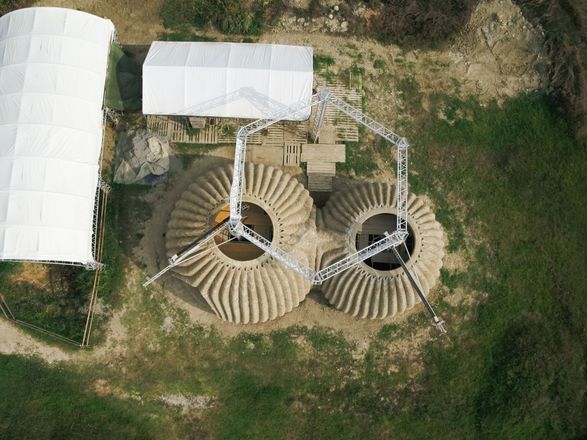
©WASP
Il prototipo
Il prototipo, di circa 60 mq, è stato realizzato nel Parco Tecnologico di WASP ed è stato occasione per una riflessione sulle sfide poste dalla nuova tecnologia.
Il prototipo, due elementi a cupola deformati, ha previsto una zona giorno e una zona notte con bagno e con alcuni degli elementi di arredo stampati insieme alla struttura. Quest’ultima caratteristica, sebbene abbia limitato in parte la flessibilità di utilizzo degli ambienti, è risultata interessante rispetto alla possibilità di rendere il manufatto pronto – in tutti i suoi aspetti – nel minor tempo possibile.
Il prototipo non si è limitato a proporre un edificio isolato, ma è stato anche inteso come porzione di un ipotetico masterplan più ampio: un pezzo di città off-grid in grado di creare un loop per il recupero delle acque (da cui la presenza del laghetto) e dell’energia. TECLA punta a creare piccole smart-communities in grado di auto-produrre, distribuire o far circolare acqua, energia e rifiuti.
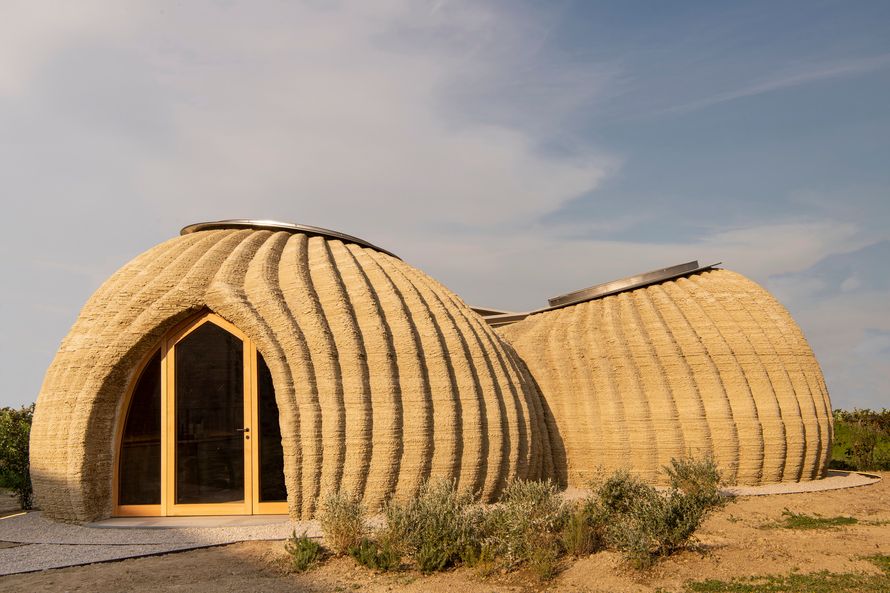
©Iago Corazza
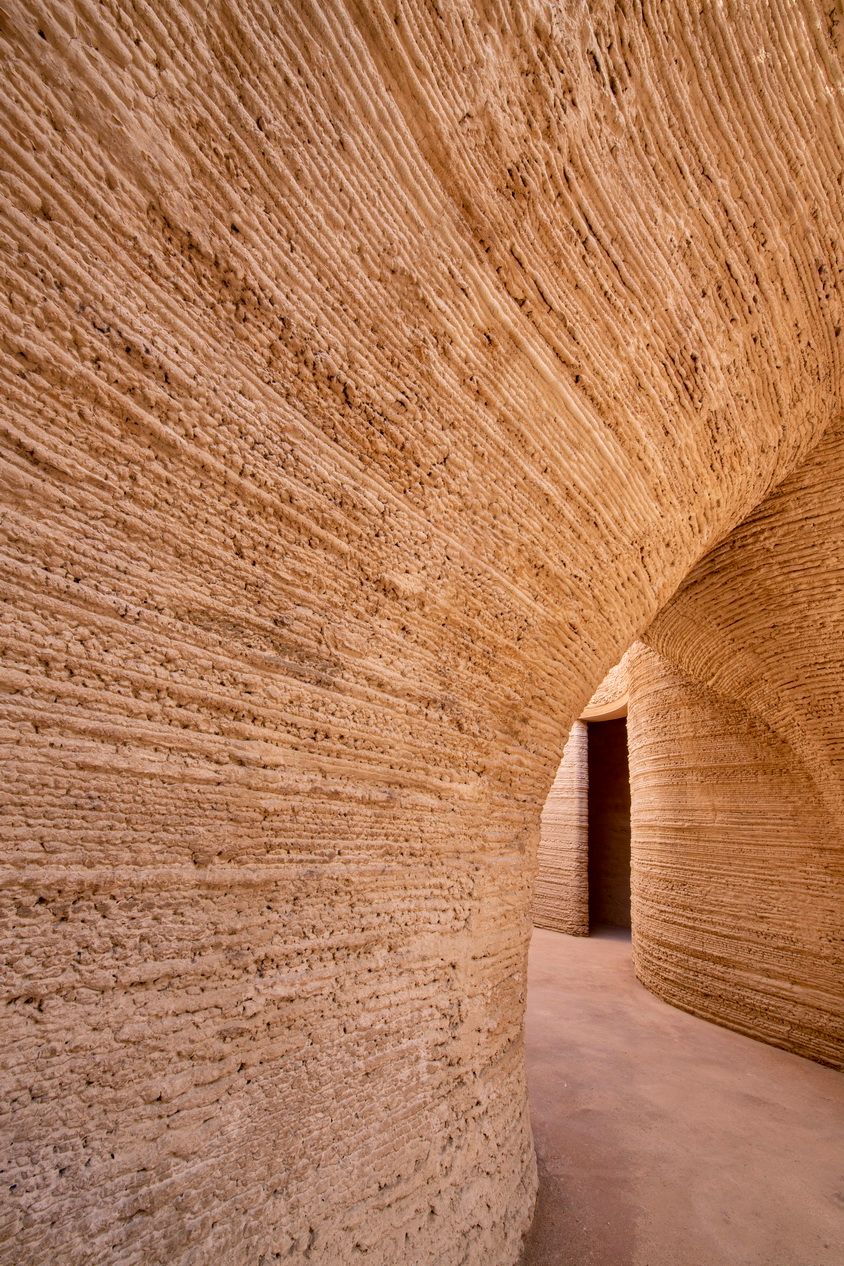
©Iago Corazza
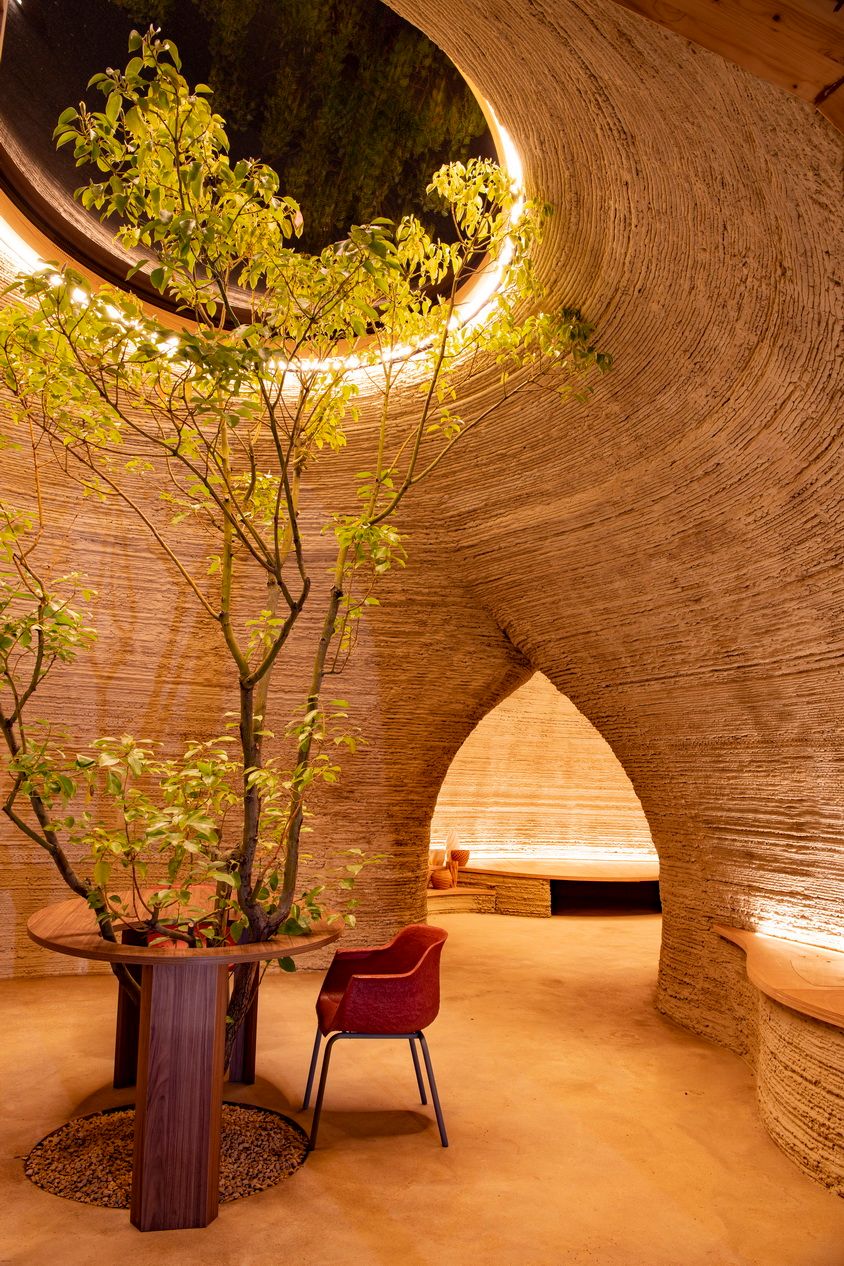
©Iago Corazza
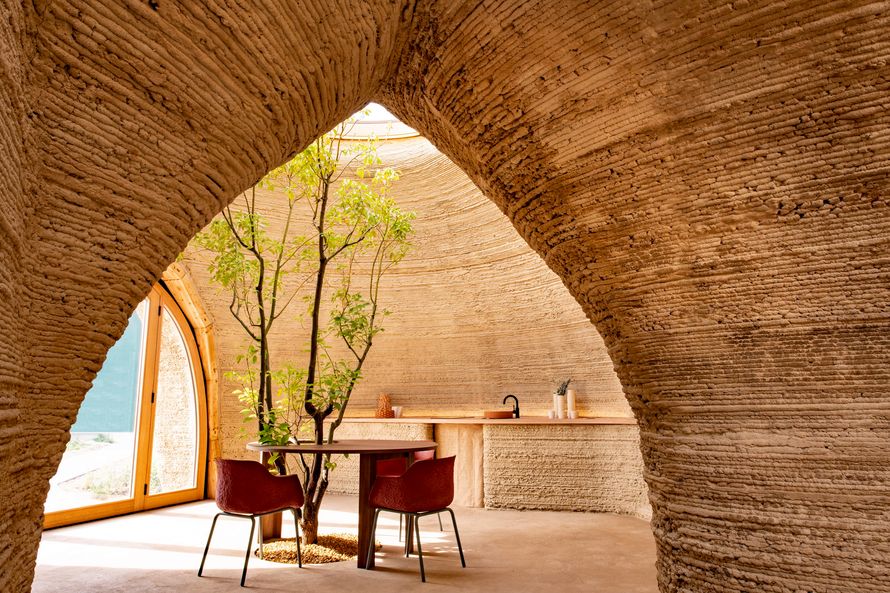
©Iago Corazza
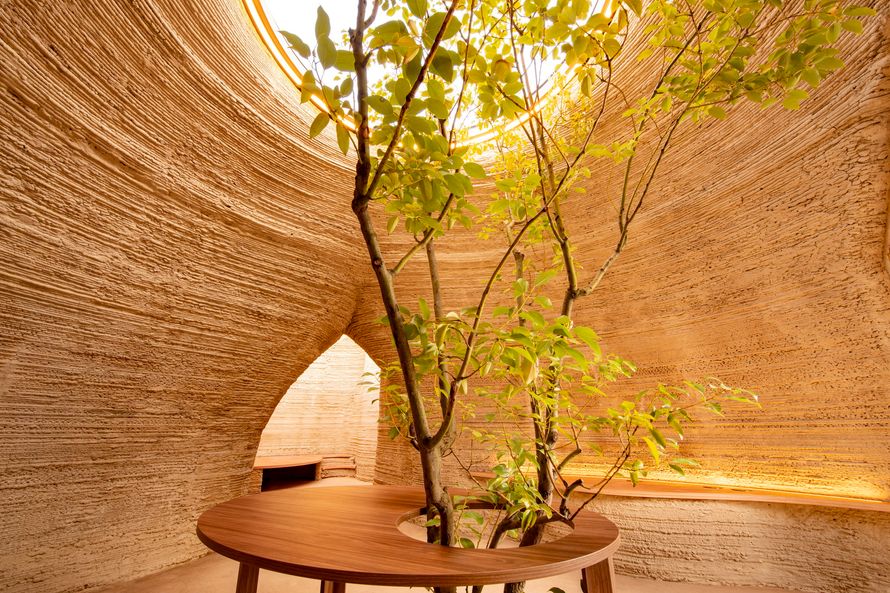
©Iago Corazza
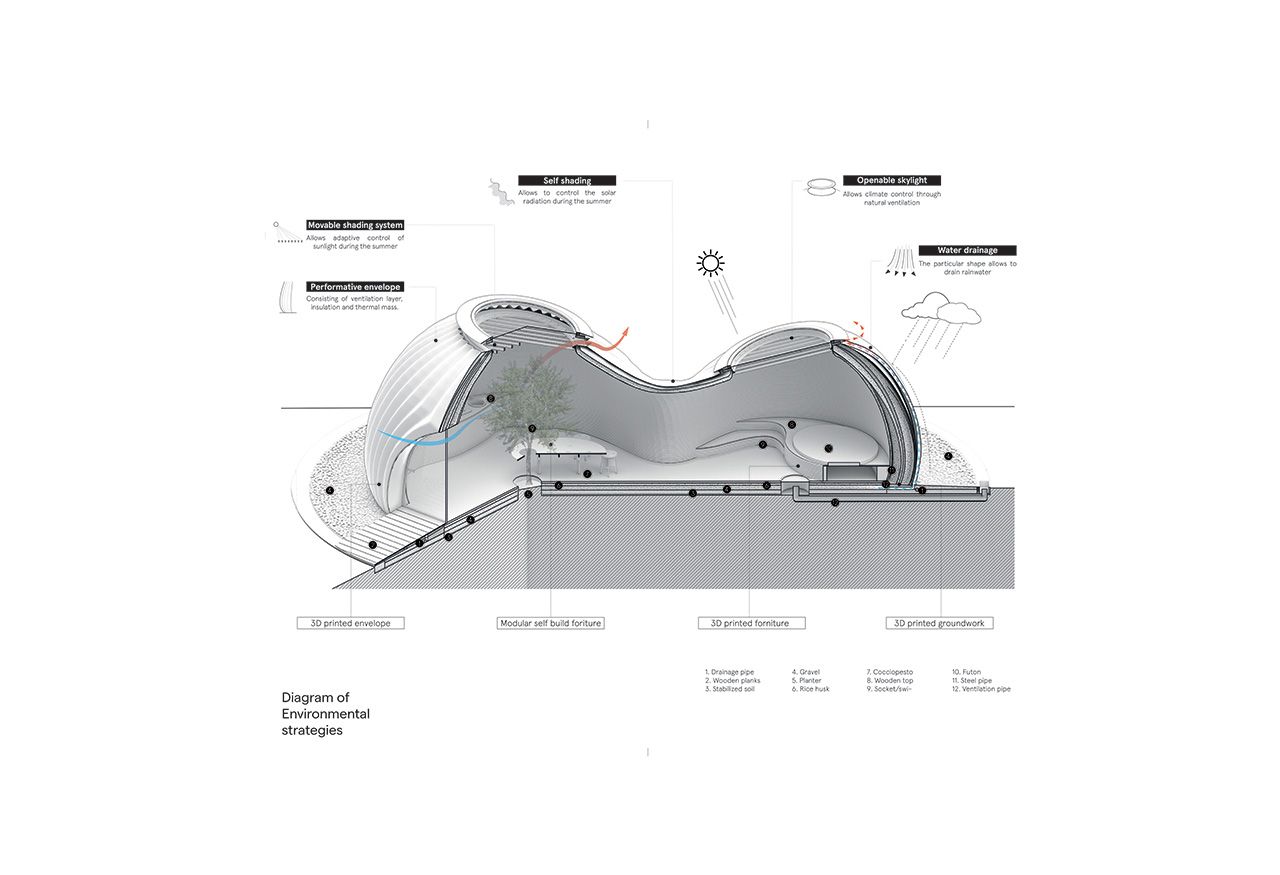
Spaccato assonometrico di dettaglio del prototipo TECLA sviluppato – Diagramma di SOS
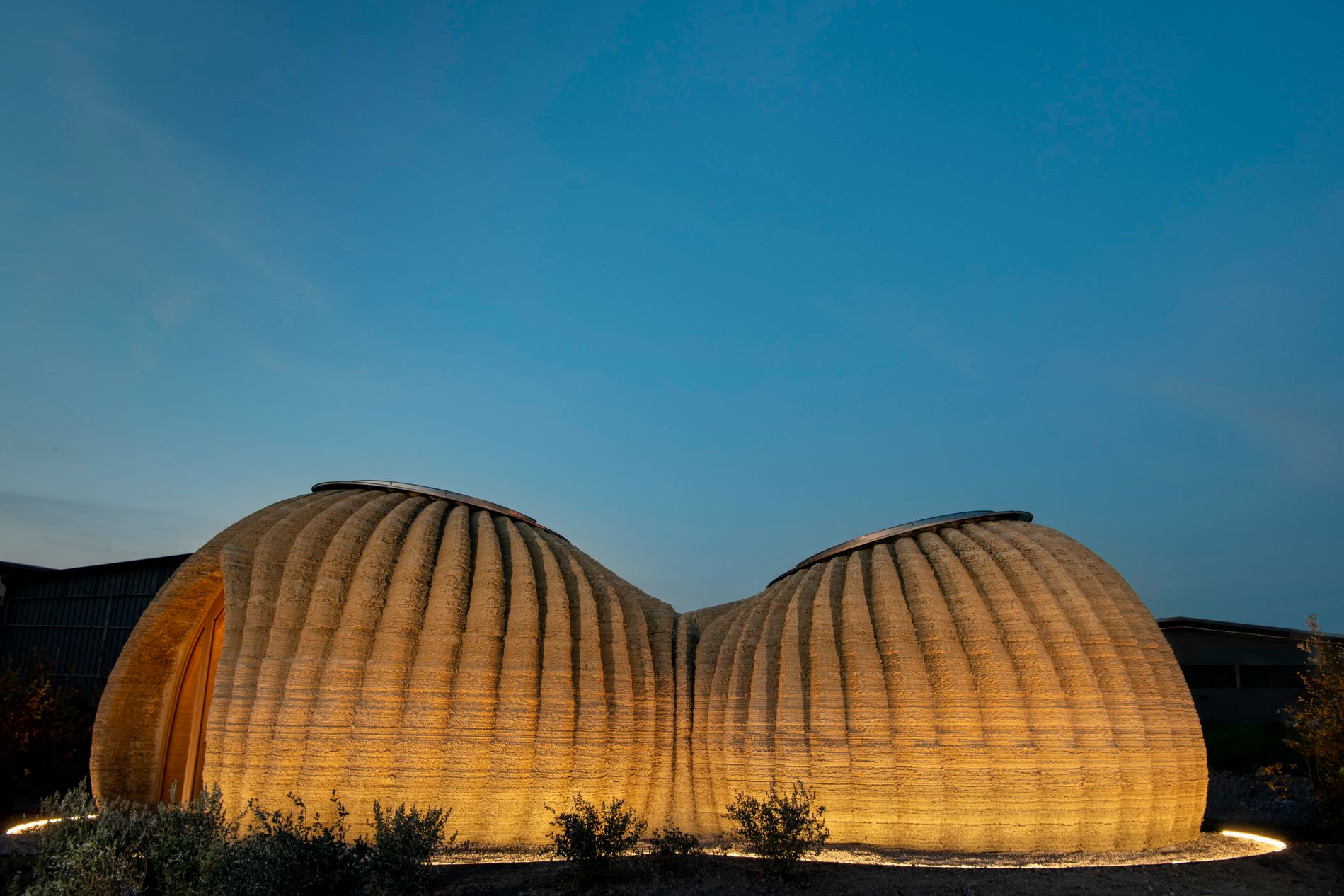
©Iago Corazza
- Informazioni generali
- Team
- Collaboratori
- Premi
